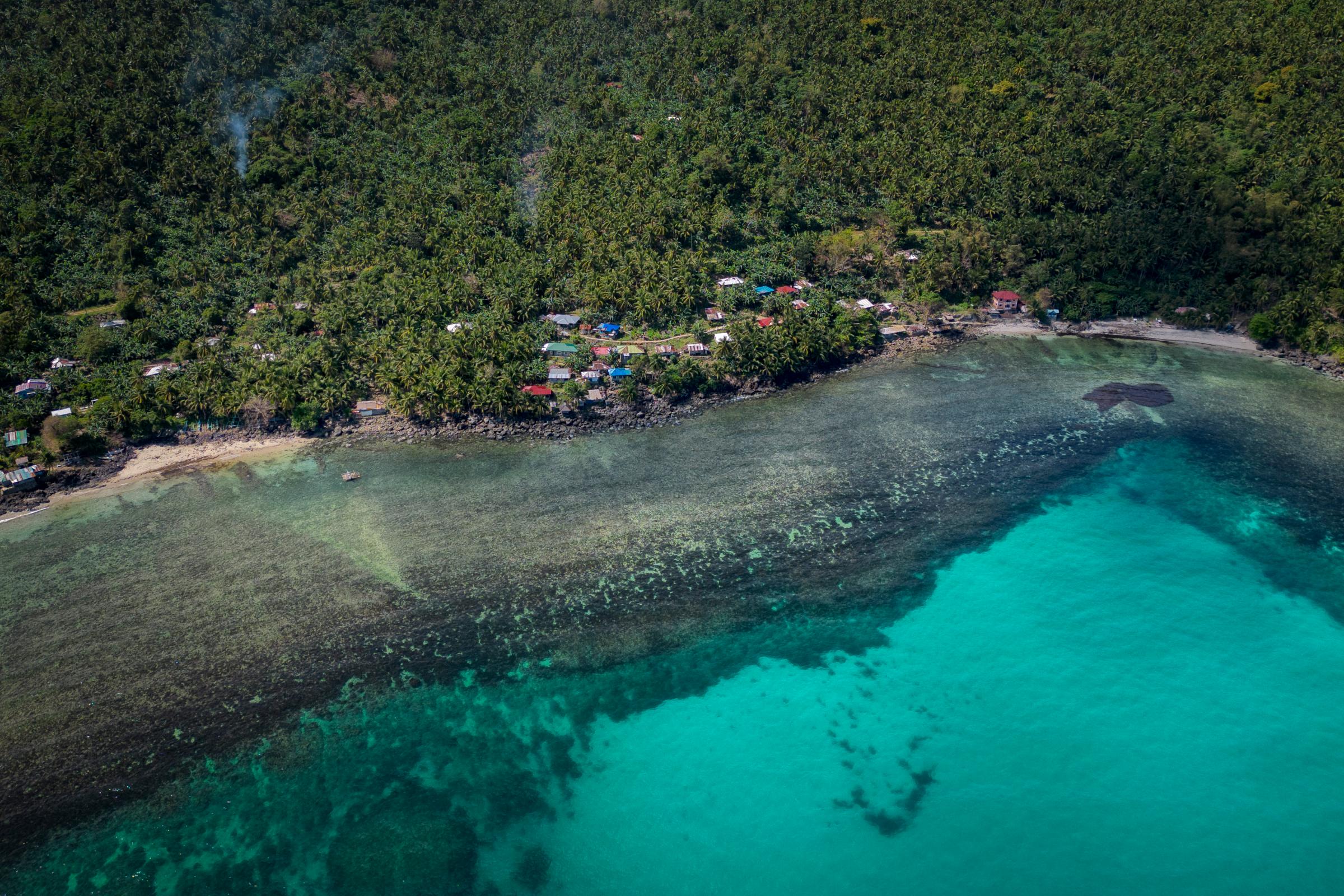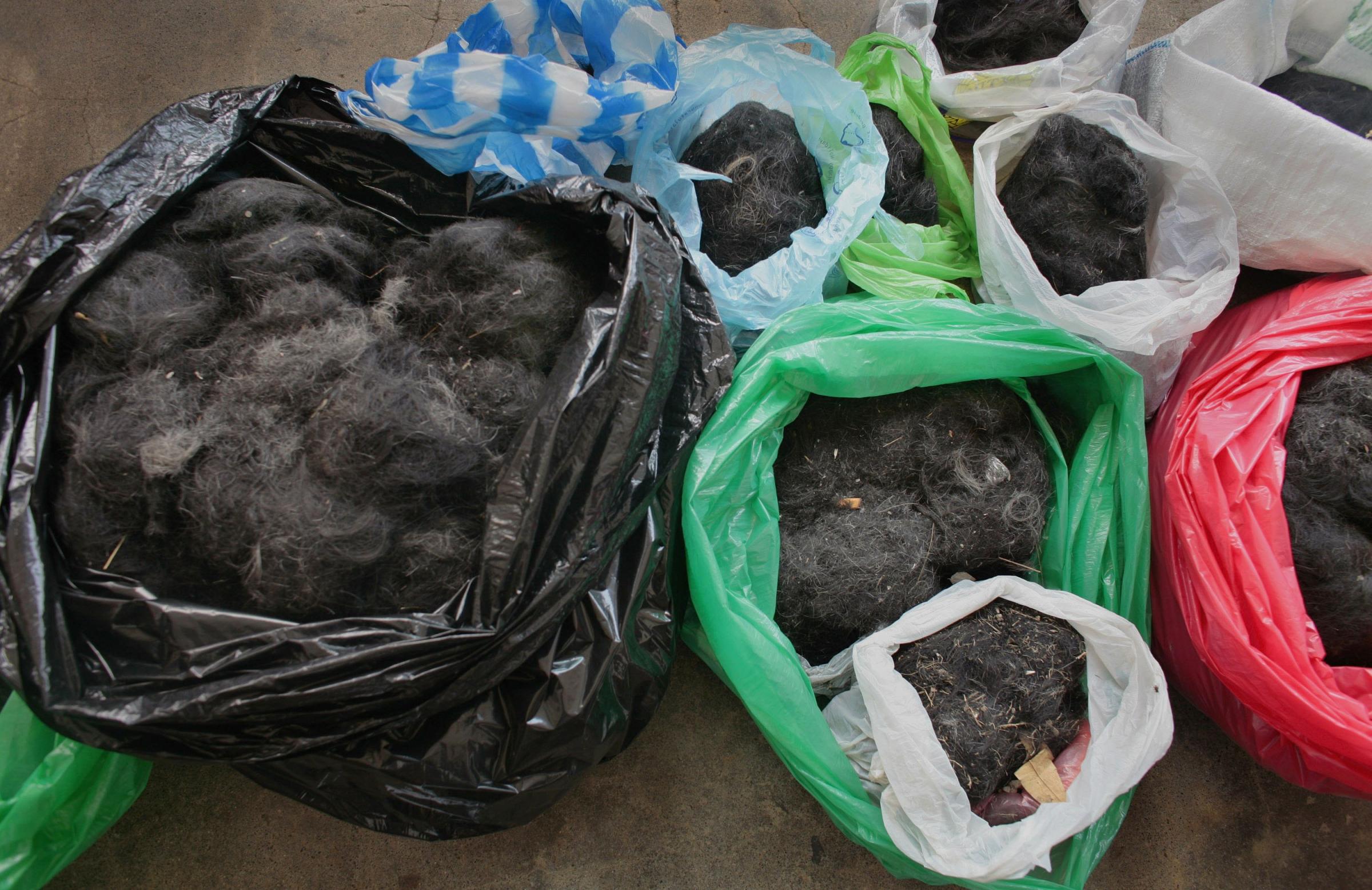
John Carlo Malicsi, owner of Bruskos Barber Shop in the Philippine city of Calapan, has collected over two sacks of hair from his clientele over the last 10 days. He’s not alone. Residents across Palawan and Mindoro, popular tourist destinations in the Philippines, are rallying in all kinds of ways, including by donating human hair, to help contain an oil spill that threatens local coastal livelihoods just recovering from the economic downturn wrought by the COVID-19 pandemic.
An oil tanker capsized two weeks ago off the coast of Oriental Mindoro province, and the slick has been dispersing towards the waters of Palawan some 100 miles away. Palawan, an island province composed of an elongated landmass and thousands of tinier islands, is home to famous white-sand beaches frequented by international tourists, and it’s considered by UNESCO to be the country’s “last ecological frontier.”
Andy Capones, a local responder at the municipal disaster office in El Nido—a Palawan town famous for its biodiversity and tourist spots—tells TIME their office has already received nearly a ton of donations, including hair from barber shops as well as clothes and water bottles, all of which can be used for makeshift oil containment booms. Capones says the hair and clothes can be packed and strung together in a line to skim the oil, while the bottles would help keep it all afloat.
While the spill has not yet reached El Nido, Capones is worried it will deal a huge blow to their economy once it does, so he and other responders are preparing to do whatever they can to keep it at bay. “First off, it will affect our fishermen and our town,” he said. “If the spill enters our shores, our local tourism will shut down.”
What’s at risk
On Feb. 28, a tanker sank 400 meters deep in the waters of Oriental Mindoro, spilling the 800,000 liters of industrial oil it carried. Most of the slick swathed that province’s northeastern shores. By March 10, the black slick reached the shores of northeastern Palawan.

In a Philippine Senate hearing on Tuesday, Dr. Cesar Villanoy from the University of the Philippines Marine Science Institute said that based on scientific modeling, local monsoon winds were able to limit the coverage of the slick, but these winds are bound to stop in a few weeks, and may cause further spread of the spill.
More from TIME
Almost 140,000 people, including some 13,600 fisherfolk, have been affected by the spill across several municipalities, the Philippine Office of Civil Defense reported Tuesday. The national environment and natural resources department also said at least 21 protected marine areas are at risk, and the slick may also affect some 2,200 hectares of coral reefs and 1,600 hectares of mangroves.
In response to the economic crisis brought on by the pandemic, the Southeast Asian nation of 110 million announced hopes to invite 4.8 million tourists this year, but the spill has already begun to put a damper on the planned bounceback. Reuters reported last week that in Oriental Mindoro, some scheduled visitors have canceled their bookings in resorts because of the spill.
“We thought that after COVID, our struggles have ended,” Jennifer Cruz, the mayor of Pola, one of the municipalities affected by the spill, lamented to CNN Philippines. “Apparently not.”
President Ferdinand Marcos Jr. ordered the cleanup of the oil spill to be completed in four months. The Philippines has asked for the help of the U.S. government, while Japan has also offered assistance.
How effective is hair?
Wary of the impact on coastal businesses dependent on the shore’s pristine waters, Philippine residents have volunteered to help clean the spill, using anything from buckets and coconut husks to even, yes, hair clippings.
Hair has actually been scientifically proven to treat oil waste thanks to its porousness as well as oil’s natural affinity to it.
“Hair is adsorbent not absorbent,” according to the San Francisco-based organization Matter of Trust, which has been making oil cleanup booms from hair, pet fur, and fleece since 2000. “Hair doesn’t swell up like a sponge, instead the oil coats the entire surface area of the hair, and because of the sheer volume, it is a very efficient material.”
In 1989, an Alabama-based hair stylist Philip McCrory first designed a prototype device that used hair to collect oil. NASA tested the technology and found that it worked well. A 2018 study from researchers at the University of Technology Sydney found that booms made from untreated human hair were “significantly better” at collecting crude oil pollution from water, compared to other materials like cotton byproducts and cellulose.
This isn’t the first time the Philippines has collected hair to clean oil waste: in 2006, a nationwide drive even prompted prison inmates to shave their heads and chests to help mop up some 189,000 liters of industrial fuel off the central island province of Guimaras.

But not all hair will help. Dr. Irene Rodriguez, associate professor at the Marine Science Institute, cautions that hair has to be prepared carefully and disposed of properly afterwards. “Eventually, these will lead to problems if the hair with oil will just stay in the environment,” she tells TIME, adding that the same waste management practices must also apply to other indigenous oil skimming methods, like using husks and other biomass materials. “Volunteerism is always welcome,” Rodriguez says, “but we always have to weigh all the efforts that we’re putting in.”
Malicsi of Bruskos Barber Shop had to put his donation drive on hold after the Philippine Coast Guard said chemicals from his collected hair clippings may cause further marine pollution. For now though, he’s holding on to the trimmings, hoping to find some other use for them. “At the back of my mind, if [there] is something that is doable, or could help in the oil spill incident, I might find another way,” he says.
More Must-Reads from TIME
- Cybersecurity Experts Are Sounding the Alarm on DOGE
- Meet the 2025 Women of the Year
- The Harsh Truth About Disability Inclusion
- Why Do More Young Adults Have Cancer?
- Colman Domingo Leads With Radical Love
- How to Get Better at Doing Things Alone
- Michelle Zauner Stares Down the Darkness
Contact us at letters@time.com